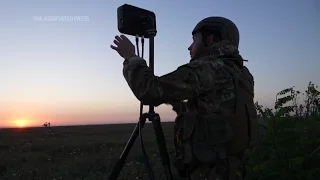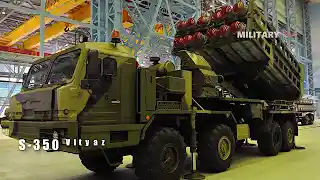The F-35 fighter jet, which crashed in South Carolina last Sunday, is a cutting-edge aircraft that is also incredibly expensive and plagued by problems.
The F-35 is designed to fly stealthily past enemy radar and defense systems, and to integrate with other F-35 jets to create a real-time map of the battlefield. It can also direct its own missiles, or those from other aircraft, ships, submarines, or ground stations.

The F-35 is used by seven partner nations, including Canada, the U.K., and Italy. It is also the most expensive weapons system in US military history, with the Pentagon projected to spend $1.7 trillion on nearly 2,500 F-35s.
The F-35 program has faced numerous delays and cost overruns. It is also seven years behind schedule and 70% over budget. The F-35A, for example, has a purchase order of about $131.9 million apiece, and other F-35s have higher price points.
In addition to its high cost, the F-35 has also been plagued by maintenance problems and low mission capable rates. A recent GAO report found that the jets were mission capable just over half the time. The goal should be 85 to 90% mission capable.

The F-35 has also been criticized for its noise and environmental impact. Residents near airbases with F-35s overhead have long complained about their noise.
Despite its problems, the F-35 is still a highly advanced fighter jet. It is unclear whether its high cost and reliability issues will ultimately outweigh its advantages. However, the F-35 is likely to remain a key part of the US military for many years to come.
The F-35 fighter jet has been involved in a number of accidents since its introduction in 2014. Some of the most notable accidents include:
- June 2014: An F-35A crashes during a training flight at Eglin Air Force Base in Florida, killing the pilot.
- September 2015: An F-35B crashes during a training flight at Beaufort Air Station in South Carolina, injuring the pilot.
- June 2016: An F-35A crashes during a training flight at Eglin Air Force Base in Florida, injuring the pilot.
- April 2018: An F-35B crashes during a training flight at Marine Corps Air Station Beaufort in South Carolina, injuring the pilot.
- April 2019: An F-35A crashes during a training flight at Eglin Air Force Base in Florida, killing the pilot.
- May 2020: An F-35A crashes during a training flight at Eglin Air Force Base in Florida, injuring the pilot.
- April 2021: An F-35A crashes during a test flight at Fort Worth, Texas, killing the pilot.
- January 2022: An F-35C crashes during a training flight at Naval Air Station Lemoore, California, injuring the pilot.
- September 2022: An F-35B crashes during a training flight at Beaufort Air Station in South Carolina, ejecting the pilot safely.

The causes of the F-35 accidents have varied, but some of the most common factors have included engine problems, pilot error, and software glitches. The F-35 program office has taken steps to address these issues, but the F-35 remains a relatively new aircraft and it is likely that more accidents will occur in the future.
In addition to the accidents listed above, there have been a number of other incidents involving the F-35, such as hard landings, engine fires, and hydraulic system failures. These incidents have raised further concerns about the safety and reliability of the F-35.
It is important to note that the F-35 is still a relatively new aircraft and it is not unusual for new aircraft to experience some problems in their early years. However, the high number of accidents and incidents involving the F-35 is a cause for concern. The F-35 program office is working to address these issues, but it is too early to say whether the F-35 will ultimately be a safe and reliable aircraft.
The cost of developing the F-35 fighter jet is estimated to be $1.7 trillion. This figure includes the cost of research and development, as well as the cost of producing and testing the first aircraft. The cost of the F-35 for allies varies depending on the model of the aircraft and the number of aircraft purchased. However, the average price for an F-35 for an ally is estimated to be $131.9 million.
Here is a calculation of the cost of developing the F-35 and the price of the aircraft for the allies:
Cost of developing the F-35:
- $1.7 trillion
Price of the F-35 for allies:
- F-35A: $131.9 million
- F-35B: $141 million
- F-35C: $151 million
It is important to note that these prices are just estimates and the actual price of the F-35 for allies may vary depending on a number of factors, such as the number of aircraft purchased, the configuration of the aircraft, and the terms of the sale.
Here are some additional facts about the cost of the F-35:
- The F-35 is the most expensive weapons system in US military history.
- The cost of the F-35 program has increased by over 70% since the program began.
- The F-35 program has been plagued by delays and technical problems.
- The cost of the F-35 has been a major source of controversy, with some critics arguing that the aircraft is too expensive and unnecessary.
Despite its high cost, the F-35 is a highly advanced fighter jet that is expected to remain in service for many years to come. The F-35 is also a major source of economic activity for the United States, with the F-35 program supporting over 190,000 jobs in the US economy.
Statements from military experts about the pros and cons of the F-35 fighter:
Pros:
- The F-35 is a highly advanced fighter jet with stealth capabilities that make it difficult to detect by enemy radar.
- The F-35 is equipped with a variety of sensors and weapons that make it a versatile and lethal aircraft.
- The F-35 is designed to work seamlessly with other aircraft and ground forces, making it a powerful force multiplier.
Cons:
- The F-35 is the most expensive weapons system in US military history.
- The F-35 program has been plagued by delays and technical problems.
- The F-35 has a relatively low mission capable rate, meaning that a significant number of aircraft are not available for use at any given time.
Statements from military experts:
- Gen. Charles Q. Brown, Jr., Commander of the US Air Force: “The F-35 is the most advanced fighter jet in the world, and it is essential to our national security. It gives us the ability to deter and defeat any adversary, anywhere in the world.”
- Gen. David H. Berger, Commandant of the US Marine Corps: “The F-35B is the most versatile fighter jet in the world, and it is essential to our ability to fight and win in any environment. It gives us the power and projection we need to operate from the sea and secure our interests around the globe.”
- Adm. Christopher W. Grady, Commander of the US Fleet Forces Command: “The F-35C is the most capable fighter jet in the world, and it is essential to our ability to maintain our naval superiority. It gives us the edge we need to operate in contested maritime environments and project power from the sea.”
- Michael O’Hanlon, Senior Fellow at the Brookings Institution: “The F-35 is a marvel of engineering, but it is also a very expensive and complex aircraft. It is important to make sure that the F-35 is truly mission capable and that it can be sustained over the long term.”
- Dan Grazier, Military Analyst at the Project on Government Oversight: “The F-35 is a very capable aircraft, but it is also a very expensive one. The F-35 program has been plagued by delays and cost overruns, and it is important to make sure that the aircraft is meeting the needs of our military before we continue to invest billions of dollars in it.”
Overall, the F-35 is a highly advanced fighter jet with a number of advantages. However, it is also an expensive and complex aircraft with a number of challenges. It is important to weigh the pros and cons of the F-35 carefully before making any decisions about its future.






















Discussion about this post